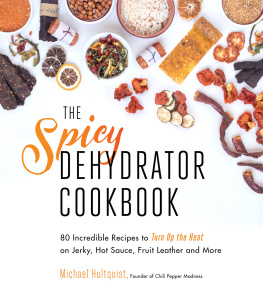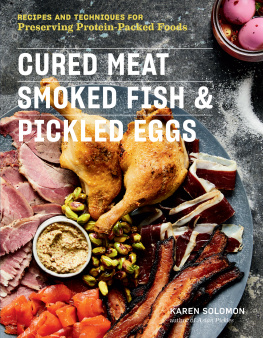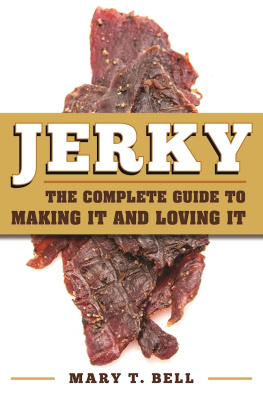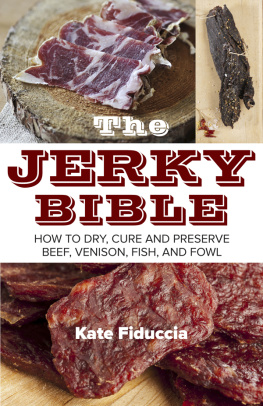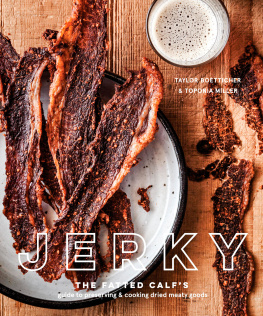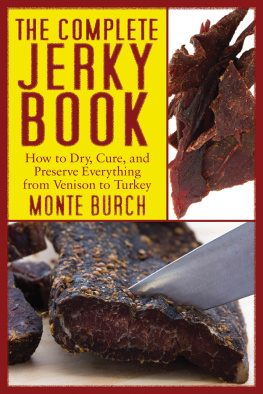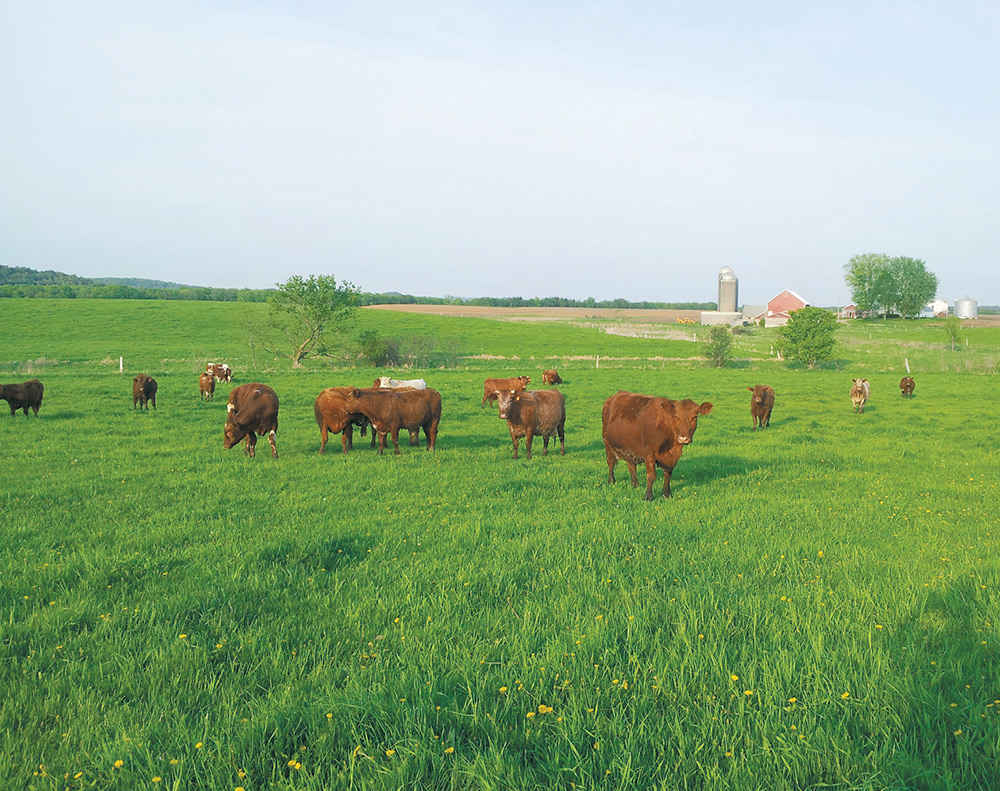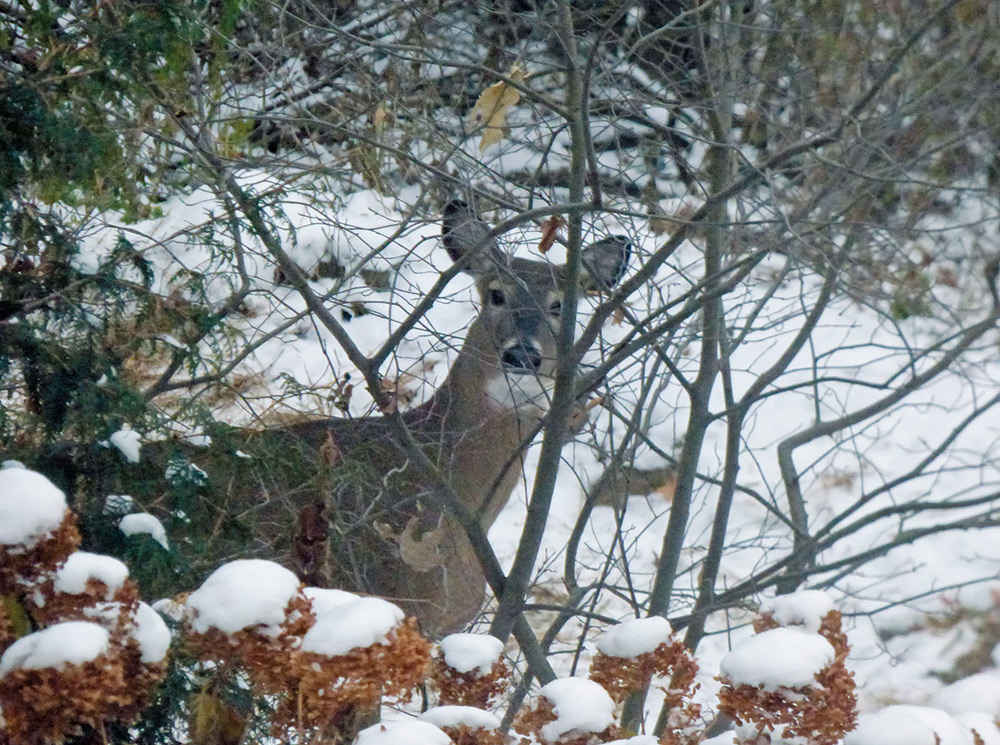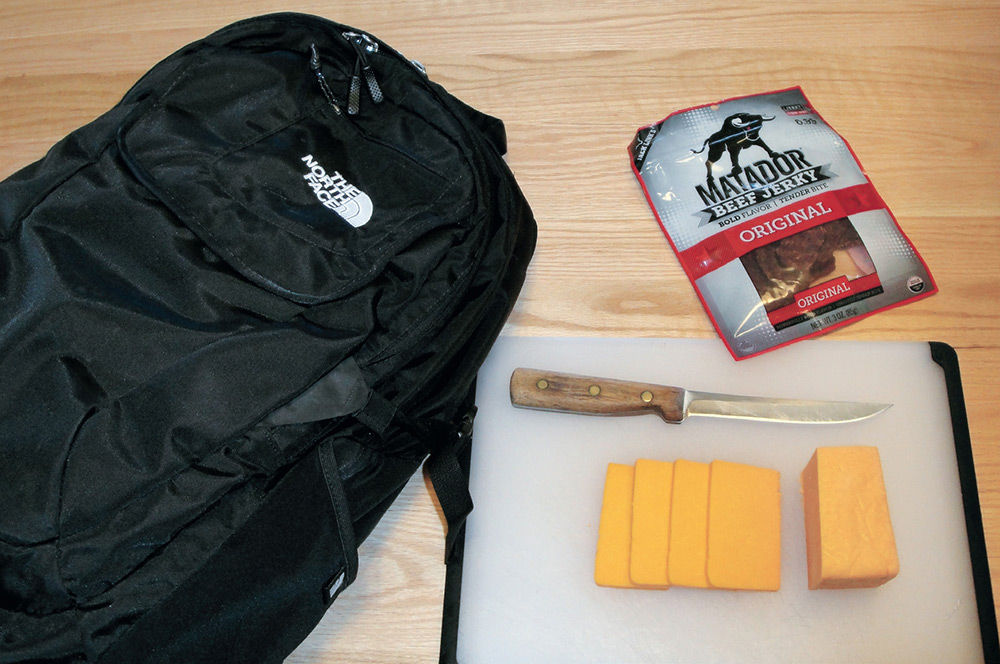CONTENTS
Guide
INTRODUCTION
When the first Europeans arrived in the New World, they discovered a food made of dried meat. It was developed by the indigenous peoples from any kind of meat they hunted that could not be immediately eaten. The Spanish explorers called it charque and it later became Anglicized for easier pronunciation as jerky .
Whether the meat came from buffalo, elk, fish, or other game, it was cut into strips and hung on racks to dry in the sun. Dehydrating these strips removed the water and made them lighter and easier for transport for their nomadic lifestyle while preserving them for emergency rations if fresh meat was not available.
Some Native American Indian tribes added animal fat, dried fruits, and berries, or all three to develop pemmican . Early European explorers quickly learned to make pemmican to supplement their diets in times of lean hunting success. The meat used by explorers and Native Americans contained no preservatives, was often low in fat and carbohydrates, and became one of the highest protein-concentrated foods available aside from fresh meat. For example, research has suggested that if a fur trade paddler required 7 to 10 pounds of meat consumed per day to sustain him, 1.5 to 2 pounds of pemmican would provide the equivalent nutrition. It yielded calories in an easily portable, compact form that made it suitable for long-term use.
When viewed from our nutritional context today, dried meat and berries supply not only protein but also the vitamins essential to fend off scurvy and fat as a ready source of energy. While the early explorers and travelers may not have considered it in those terms, they recognized it for their situation as an ideal food staple. They needed a high-energy food that could sustain them in lean hunting times and inclement weather conditions and keep them from starving.
Fast forward several hundred years, and jerky can be viewed today in a similar light. Although modern tastes have changed much from those explorer days, pemmican is still regarded as a survival food by those traveling in remote wilderness regions. Jerky itself is even more popular. There are many commercial varieties available, and it can be easily and safely processed at home from many kinds of meat. With our unprecedented access to spices and flavorings, we can produce a staggering variety of jerky flavors.
Beef jerky has become a popular snack. It is lightweight, portable, and provides protein and energy for active lifestyles.
Jerky is typically made of meat derived from beef.
One factor that makes jerky attractive to a wide variety of sportsmen, sportswomen, and even non-hunters is that almost any type of meat can be dried into jerky. Whether it derives from game animals such as deer, elk, or squirrel, or from domestic livestock such as cattle or poultry, their meat can be fashioned and dried into jerky. Wild game birds such as turkeys, pheasants, ducks, and geese are sources for jerky. It can be made from fresh or frozen fish. And its possible to make jerky from soybean or plant-based products. The range is seemingly endless, and this provides a vast array of options to you.
Making jerky does not need to be the sole province of an outdoors or hunting lifestyle. The principles of jerky making are relatively simple and can be mastered by those willing to spend the time to study and adhere to proper food-handling techniques and the disciplines of safe food production. Its simplicity comes with a responsibility to follow processing recommendations that will create a safe and stable food product. With access to appropriate equipment you can make your own jerky.
The Complete Book of Jerky will guide you through the processing methods of making safe and satisfying jerky products for you and your family.
REASONS FOR MAKING JERKY
There are about as many different reasons for making jerky as there are people who make it. Like with other foods, a persons motivation for making jerky often depends on taste, variety, access to meat and equipment, and the amount of control they want over the manner their food is processed or preserved.
The food pyramid suggests a daily intake of carbohydrates, proteins, and fats to maintain a healthy body. These can be supplied by cereals, fruits and vegetables, milk, or meats. Many of these same foods can be used in jerky making to supply one or more of these requirements. Because jerky is often made from lean cuts of meat that are low in fat and cholesterola dense, concentrated source of nutrientsit can be a high protein and energy source.
Although some people have considered homemade jerky to be a less-expensive alternative to store-bought or ready-made products, for true cost comparisons you will need to factor in such things as equipment purchases, ingredient costs, and your time. But with some guidance, you can make jerky products that rival the expense and taste of those produced commercially, and you will have a homemade product.
Jerky can also be easily made from wild game such as deer, moose, or elk. Jim Ruen
Jerky goes well with other foods, whether you are camping, hiking, or sitting in your backyard. Jim Ruen
HOW TO USE THIS BOOK
The purpose of this book is to help guide you through all aspects of making jerky, from sourcing the meat to processing it. Detailed discussion and step-by-step instructions will allow you to safely transform raw meat into a stable, edible snack or a meal side dish.
Different species and meat cuts from which jerky can be sourced are discussed in detail. You will learn about basic charcuterie or the cutting up of the meat into a manageable form before it is processed or dehydrated.
The numerous recipes included will help you make use of your jerky, but these represent only a fraction of what you can do with your jerky meats or how it can be processed into an attractive dish to serve at your family table. While recipes are located throughout the chapters by variety, they are meant to be used in tandem with the rest of the booknotably Chapters 1 through 3 and the four methods for making jerky that begin on .
In short, this book can help you discover new food experiences. So, take a seat, turn the page, and were off on a new adventure.
Chapter 1
GETTING STARTED
A s with any new hobby, it may be tempting to jump right into making jerky, learning as you go and not fully understanding the basic steps. However, theres a reason jerky making is often not part of more general preservation books. There are additional considerations and very clear food safety recommendations that must be followed to ensure a safe food product.



